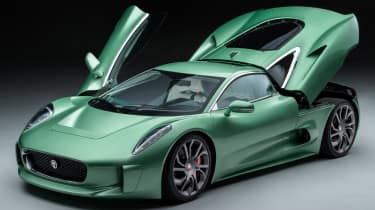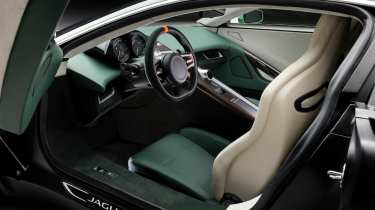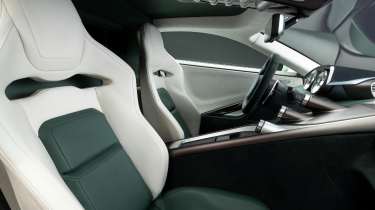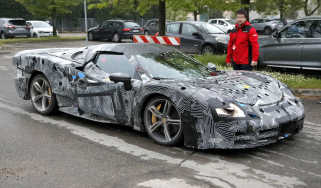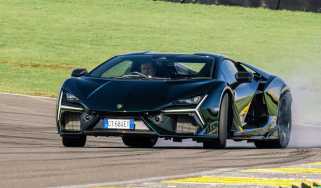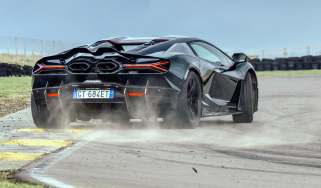Road-going Jaguar C-X75 one-off realises the stillborn hypercar's potential
Jaguar's C-X75 was the one that got away for Ian Callum. In this bespoke commission using car 001, he’s made the car he always hoped it would be
Callum has revisited the Jaguar C-X75, building the ultimate version of the stillborn hypercar as a bespoke commission, with an all-new interior, working active aero and a seven-speed dual-clutch transmission.
The C-X75 is, for supercar and hypercar enthusiasts, the one that got away. It’s the car that would have made the ‘Holy Trinity’ of the Ferrari LaFerrari, Porsche 918 Spyder, and McLaren P1 a quaternity. None were more upset by its cancellation than Ian Callum, for whom the car would have been a career crown jewel.
> Jaguar Land Rover Classic Works: inside JLR's ultimate car cave
Though it never reached production, it did find fame as the villain car for the 2015 James Bond film Spectre. It is out of these rag-tag V8-powered prototypes (the production car was supposed to use an advanced Williams-developed four-cylinder hybrid) that the road going C-X75 has been realised.
And Callum, Ian Callum’s design and engineering outfit, has obliged. While it had previously prepared one of the stunt cars for road use, that was in effect a minimum compliance car, with emissions equipment, mirrors, lights and so on for IVA certification.
Here we have what Callum calls the ‘ultimate C-X75 commission’ that goes ‘beyond the core practicalities of readying the C-X75 for road use’. From a total repaint and correction of shutlines, to a new transmission, to a refined and retrimmed interior, it’s potentially as close as we’ll get to seeing what the production Jaguar C-X75 could have been.
While the IVA-certified car was stunt car number 007, this is car 001. Callum claims that over 1000 hours of work has gone into getting the car to look as it does now, from stripping and painting it (Willow Green, if you’re curious), to getting all the bodywork to sit together as you’d expect on a brand new supercar, rather than a stunt car with quick release latches.
There are new machined aluminium window surrounds, a bespoke filler cap, a polished metal grille and carbon accenting. When the car’s moving at speeds over 37mph an active wing deploys for additional downforce and stability.
Mechanically, the car is far removed from both the original concept and the stunt cars. While it retains a 5-litre supercharged V8, it now puts its power through a seven-speed dual-clutch transmission with tuning for both casual driving and more sporting use. There’s also an acoustically tuned exhaust that springs to life in the dynamic mode, which will also sharpen up gear shifts and throttle response.
The car has been engineered to be usable, with a balanced road-focused setup. It even now has a nose lift. The wheels measure 20 inches at the front and 21 inches at the rear and are wrapped in Michelin Pilot Sport 4S tyres.
On the inside is where Callum has arguably done its best work. Where once there were crude control panels for vital systems in the stunt car, there’s now a totally reprofiled, luxurious cabin, of the kind you’d expect to find in a modern hypercar.
Dominating the centre of the cockpit is a 918 Spyder-esque ‘arrowhead’ featuring three rotary controls with integrated touch screens. There’s Apple CarPlay, wireless phone charging and a bespoke sound system.
The steering wheel is all new and bespoke, as is pretty well the whole dash, instrument binnacle and so on. It even has 3D-printed cupholders. The dark green and cream colourway is dramatically but tastefully split, with a ‘waterline’ in the seats.
Ian Callum, co-founder of Callum and the C-X75’s original creator, said: ‘C-X75 was ‘the one that got away’ – a car brimming with unfulfilled potential. We’ve combined the customer’s wishes with carefully engineered solutions to bring C-X75 to the thoroughly satisfying conclusion it always deserved.’
